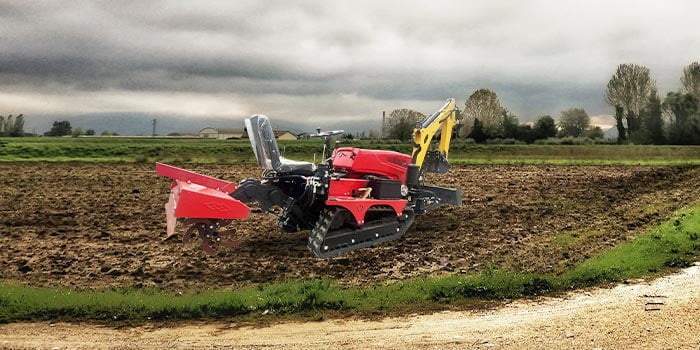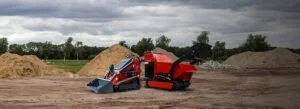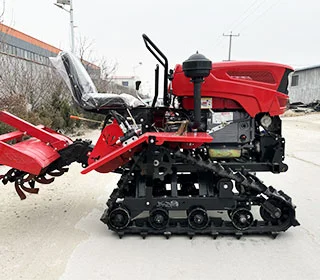Choosing the Best Agricultural Drone: Key Features to Consider
Welcome to My Blog!
Before we dive into the content, I’d love for you to join me on my social media platforms where I share more insights, engage with the community, and post updates. Here’s how you can connect with me:
Facebook:https://www.facebook.com/profile.php?id=61557298070472
Now, let’s get started on our journey together. I hope you find the content here insightful, engaging, and valuable.
Introduction
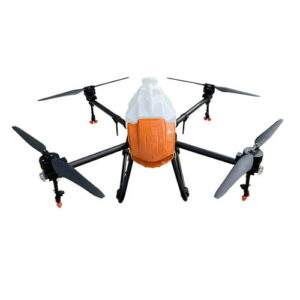
In modern agriculture, technology is revolutionizing how we manage and optimize farming practices. Among these advancements, the best agricultural drone stands out as a game-changer, offering unparalleled precision and efficiency. Selecting the best agricultural drone involves understanding the unique features and benefits that each model offers, and how these can be leveraged to enhance farm management.
In this blog post, we will explore the essential features to consider when choosing the best agricultural drone. We’ll also discuss the advantages of using these drones in farming operations, and how they can help you make informed decisions to maximize your agricultural productivity.
Key Features to Consider When Choosing the Best Agricultural Drone
Selecting the best agricultural drone requires careful consideration of several key features that directly impact its performance and suitability for your specific farming needs. Here’s a comprehensive guide to understanding these features:
Camera Quality and Sensor Types
When looking for the best agricultural drone, camera quality and sensor types are crucial factors. High-resolution cameras and advanced sensors are essential for capturing detailed imagery and collecting valuable data.
- Camera Resolution: The best agricultural drones are equipped with high-resolution cameras (e.g., 4K or higher) to provide clear and detailed images of crops and soil.
- Sensor Types: Multispectral and thermal sensors are important for monitoring crop health and detecting issues such as nutrient deficiencies or pests. These sensors enable the drone to capture different wavelengths of light and thermal data, which are essential for precision agriculture.
Flight Time and Battery Life
Flight time and battery life are significant considerations when choosing the best agricultural drone. Longer flight times allow for more extensive coverage of your fields and reduce the frequency of recharging.
- Battery Capacity: The battery capacity, measured in milliampere-hours (mAh), directly affects the flight duration. The best agricultural drones feature batteries with high capacities, enabling extended flight times.
- Flight Time: Typically, the flight time for the best agricultural drones ranges from 20 to 40 minutes. Longer flight times are advantageous for covering larger areas without needing frequent recharges.
Payload Capacity
Payload capacity determines the maximum weight a drone can carry, including cameras, sensors, and other equipment. For the best agricultural drones, this feature is crucial if you plan to use additional sensors or spraying systems.
- Maximum Payload: The best agricultural drones have a high payload capacity to accommodate various types of equipment. This versatility allows you to use the drone for multiple applications, such as crop monitoring and spraying.
- Versatility: Some top agricultural drones offer modular designs, allowing you to swap out different payloads for different tasks. This flexibility enhances the drone’s utility and adaptability.
Autonomous Flight Capabilities
Autonomous flight capabilities are a key feature of the best agricultural drones. These features include automated flight paths and mission planning tools that streamline operations and improve precision.
- Waypoint Navigation: The best agricultural drones support waypoint navigation, enabling them to follow pre-set flight paths automatically. This feature ensures consistent coverage and data collection.
- Automated Data Collection: Autonomous flight capabilities allow the drone to perform specific tasks, such as scanning or mapping, with minimal manual intervention. This increases efficiency and accuracy.
Durability and Weather Resistance
The durability and weather resistance of a drone are vital, especially for agricultural environments that may expose the drone to harsh conditions. The best agricultural drones are designed to withstand various environmental factors.
- Build Material: Look for drones made from high-quality, durable materials that can endure exposure to dust, moisture, and other elements common in agricultural settings.
- Weather Resistance: The best agricultural drones feature weather-resistant designs, including water resistance and the ability to operate in windy conditions. This ensures reliable performance even in challenging weather.
Ease of Use and User Interface
Ease of use and a user-friendly interface are essential when operating the best agricultural drone. A drone with an intuitive control system and software can significantly enhance the user experience.
- Control System: The best agricultural drones come with easy-to-use control systems that allow for both manual and automated control. A well-designed control system simplifies operations and reduces the learning curve.
- Software: Evaluate the drone’s software for features like data analysis, mission planning, and real-time monitoring. The best agricultural drones offer robust software that integrates seamlessly with the hardware.
Data Integration and Analysis
The ability to integrate and analyze data is a significant advantage of the best agricultural drones. Effective data management tools help you make informed decisions based on the data collected during flights.
- Data Export: Ensure the drone’s software supports data export in formats compatible with other agricultural tools and platforms. This allows for easy integration with existing systems.
- Analysis Tools: Look for drones with built-in analysis tools or compatibility with third-party software for processing and interpreting data. Advanced analysis capabilities provide valuable insights into crop health and farm management.
Comparative Table: Key Features of Agricultural Drones
To help you better understand the differences between various agricultural drones, here is a comparative table highlighting key features of different models:
| Feature | Basic Agricultural Drone | Best Agricultural Drone |
|---|---|---|
| Camera Resolution | HD (1080p) | 4K or higher |
| Sensor Types | Basic RGB camera | Multispectral and thermal sensors |
| Battery Capacity | 2000 mAh | 5000 mAh or more |
| Flight Time | 20 minutes | 40 minutes or more |
| Payload Capacity | 0.5 kg | 1 kg or more |
| Autonomous Flight | Basic waypoint navigation | Advanced autonomous mission planning |
| Weather Resistance | Limited | Water-resistant, wind-resistant |
| User Interface | Basic controls | Advanced, user-friendly interface |
| Data Integration | Basic data export | Advanced analysis and integration |
Benefits of Using the Best Agricultural Drone
Investing in the best agricultural drone offers several advantages that enhance both farming efficiency and productivity. Here are some of the key benefits:
Enhanced Crop Monitoring
The best agricultural drones provide high-resolution imagery and detailed data, allowing for comprehensive crop monitoring. This enables farmers to detect issues early, such as nutrient deficiencies, pests, and diseases, leading to timely interventions and improved crop health.
Increased Efficiency
With features like autonomous flight and automated data collection, the best agricultural drones streamline various farming tasks. This increased efficiency allows for quicker and more accurate coverage of large areas, saving time and reducing labor costs.
Improved Decision-Making
Data collected by the best agricultural drones can be analyzed to make informed decisions about crop management, irrigation, fertilization, and pest control. This data-driven approach leads to more precise and effective farming practices.
Cost Savings
By optimizing resource use and improving operational efficiency, the best agricultural drones can lead to significant cost savings. Reduced labor costs, minimized resource wastage, and enhanced crop yields contribute to better financial outcomes for farmers.
Data-Driven Insights
Advanced drones come with robust data analysis tools that provide valuable insights into various aspects of farm management. These insights help in understanding patterns, predicting trends, and making strategic decisions to enhance productivity.
Enhanced Safety
Using the best agricultural drones for tasks such as crop spraying or monitoring reduces the need for human labor in potentially hazardous conditions. This not only improves safety for workers but also ensures more consistent and accurate task execution.
How to Maintain and Care for Your Agricultural Drone
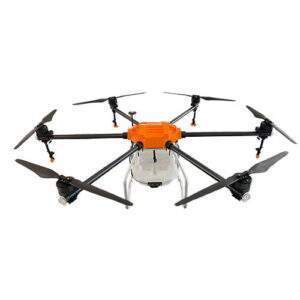
To ensure the longevity and optimal performance of your best agricultural drone, proper maintenance and care are essential. Follow these tips to keep your drone in excellent condition:
Regular Inspections
Perform regular inspections of your drone to check for any signs of wear or damage. This includes inspecting the propellers, camera, sensors, and battery. Early detection of issues can prevent costly repairs and ensure reliable performance.
Clean and Calibrate
Keep your drone clean by removing dirt and debris from its components. Regularly calibrate the sensors and camera to maintain accuracy in data collection and imaging. Follow the manufacturer’s guidelines for cleaning and calibration.
Update Software
Keep the drone’s software and firmware up to date to benefit from the latest features, improvements, and security enhancements. Regular updates can also fix bugs and enhance the drone’s performance.
Store Properly
Store the drone in a dry, cool place when not in use. Avoid exposing it to extreme temperatures, moisture, or direct sunlight, which can damage the electronic components and affect performance.
Monitor Battery Health
Take care of the drone’s battery by following the manufacturer’s recommendations for charging and storage. Avoid overcharging or completely discharging the battery, as this can reduce its lifespan and performance.
Conclusion
Choosing the best agricultural drone involves evaluating various features and understanding how they align with your specific farming needs. By focusing on key aspects such as camera quality, flight time, payload capacity, and ease of use, you can select a drone that enhances your agricultural operations and delivers valuable insights.
The best agricultural drones provide numerous benefits, including improved efficiency, enhanced crop monitoring, and cost savings. Investing in the right drone can transform your farming practices and help you achieve better results in crop management and overall productivity.
FAQ
What features should I look for in the best agricultural drone?
When selecting the best agricultural drone, look for features such as high-resolution cameras, advanced sensors, long flight time, high payload capacity, autonomous flight capabilities, durability, weather resistance, and user-friendly controls.
How do I determine the right flight time for my needs?
The flight time of the best agricultural drones typically ranges from 20 to 40 minutes. Consider the size of your fields and the tasks you need to perform. Longer flight times are advantageous for covering larger areas and minimizing the need for frequent recharges.
Can the best agricultural drones operate in all weather conditions?
While some of the best agricultural drones are designed to be weather-resistant, it’s essential to check the specific weather conditions they can handle. Most high-quality drones can operate in moderate weather conditions but may not be suitable for extreme weather.
How can autonomous flight capabilities benefit my farming operations?
Autonomous flight capabilities in the best agricultural drones allow for automated flight paths and data collection. This increases efficiency, ensures consistent coverage, and reduces the need for manual control, making farming operations more streamlined and accurate.
Are agricultural drones suitable for small farms?
Yes, the best agricultural drones are suitable for farms of all sizes, including small farms. They offer precision and efficiency that can benefit small-scale farming operations by improving crop monitoring and management.

